It was one of those perfect, post-golden-week, late spring Japanese days. Blazing sunshine, but not yet the humidity of a Japanese summer. It was time to get back on the Kinki Nature Trail and push on towards the border with Okayama Prefecture.
The weeds on the half-constructed roads around Une station had exploded, hiding the orange-grey rubble beneath a thickness of green. On the hillsides, puffs of fresh green filled the dull brown gaps of a month ago. I followed the Yano River back up to where I had left the Kinki Nature Trail before. Along the river, each bird reacts in a different way to my approach: the egrets and herons with a few powerful flaps, followed by a few more slow lazy ones, the cormorants skim away low with fast beats, pied wagtails with fluttery bounces and the mallards with a fast waddle and a slow paddle.
The riverside is lined with apparent filth — smut grass and bastard indigo bushes, and invader and invadee — Japanese knotweed and coriopsis, a pretty yellow flower from North America.
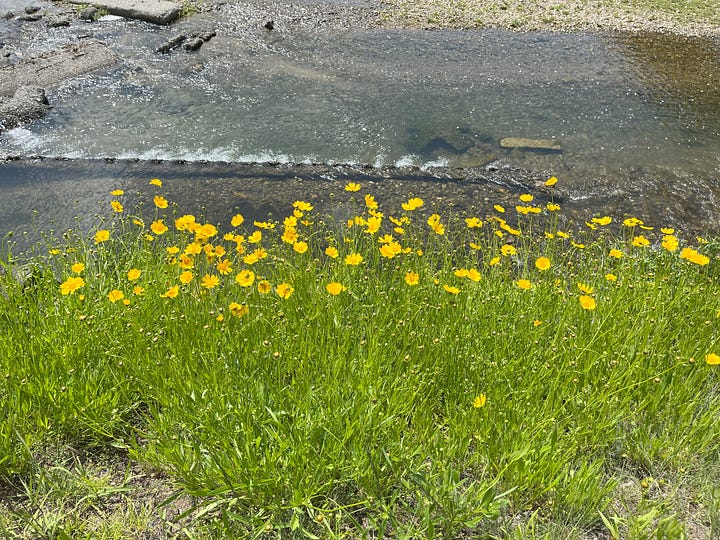
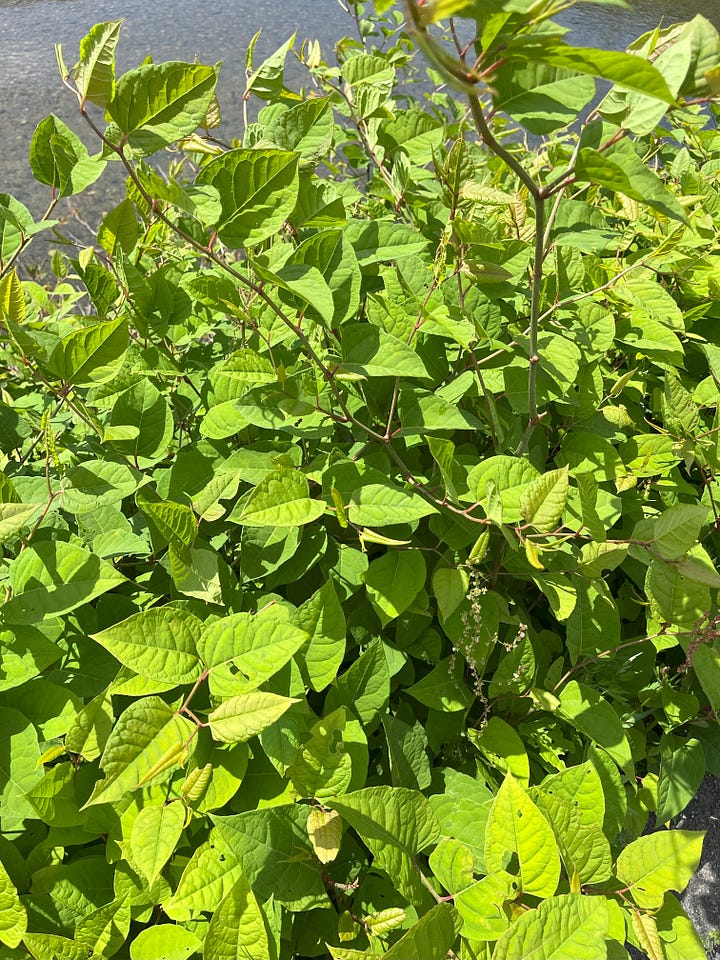
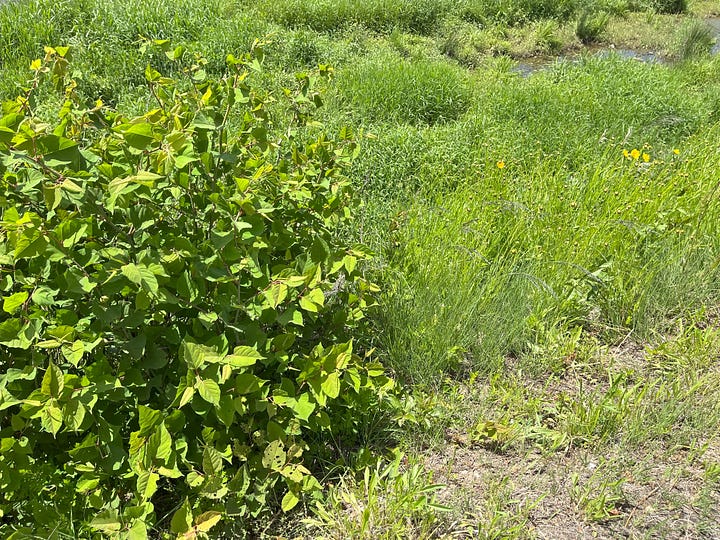
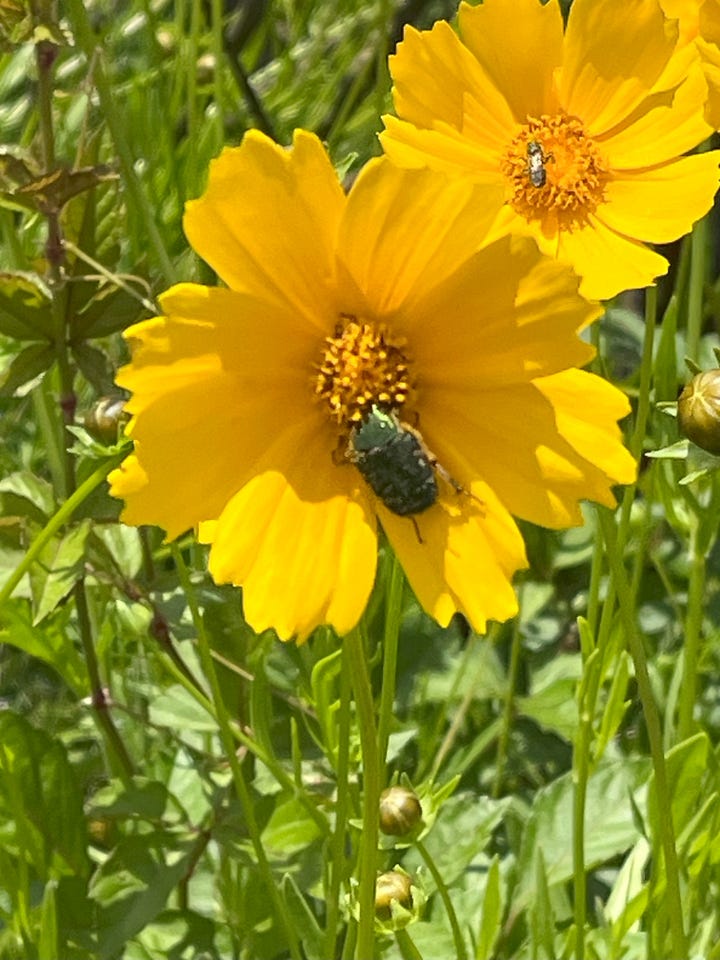
A shrine marked the starting point of the trail across the mountains to Onozu. The gate to stop wild boar and deer from rampaging through the local crops was twisted together with two lengths of yellow electrical wire, easy to twist open, a nightmare to twist back together from the other side, I ended up tying a reef knot to hold them together.
These mountains were not the sharp, steep conical mountains near the coast, that had forced me into sudden ascents that left me panting-breathed, with the air singing in my ears, but long, low, teeter-edged ridge lines. Fallen timber like a giant game of pick-up-sticks lay in the gullies below.
I reached Onozu, a picturesque village of overflowing gardens and terraces in a tight valley. The village was supposedly founded by Taira no Tsunemori and four of his retainers who had somehow escaped the decisive Battle of Dan-No-Ura of the Genpei War in 1185. The sea battle took place in the Shimonoseki Straits between Honshu and Kyushu and the Taira clan were defeated. Taira no Tsunemori is said to have committed suicide following the battle, a devastating loss for the Taira clan that also saw the young Emperor Antoku drowned and the imperial regalia cast into the sea, with some pieces never retrieved. And yet, one high-ranking clan member escaped and travelled half-way up Japan to found a village in the middle of nowhere, hmmm…
A sign pointed to a “Jar-Jar Hole”, which sounded like every Star Wars fan’s worst nightmare, but it turned out I’d misread it, and it actually said “Jan-Jan Hole”. Sadly, the hole would involve a costly detour, so I never found out what it was.
I picked up another Himalayan mountain ash walking stick, and set off back up into the mountains again, then down, following a river course that eventually led to a teal-green lake. Along the way, I disturbed another Japanese badger (anaguma), this time very close, despite the tap-tapping of my stick on rocks. For the first time too, I saw a deer, Bambi-like, that sprang away with all four hooves in the air at the same time.
I had one final mountain pass to cross to reach the Chikusa River valley. Twice, I nearly stepped on small brown snakes that only moved slowly out of the way, despite me tapping my stick near them. Most snakes I saw bolted off into the undergrowth before I had any time to observe them closely, but these were different. Their heads were narrow, not the flaring triangle that indicates a venemous type, their patterning understatedly beautiful and great camouflage among the forest floor litter. Later research showed them to be the non-venemous Japanese Rat Snake.
At the top of the pass were the ruins of Shirahata Castle, a stronghold of Akamatsu Enshin, a local warlord during the 1300s. Akamatsu supported imperial forces as they attempted to wrestle power from the Kamakura shogunate. In 1336, the shogunate forces attacked Shirahata Castle with a force of 60,000 troops, but with only 2,000 defenders, Akamatsu held out for over 50 days. The delay allowed imperial forces to regroup in Kyushu and eventually march on Kyoto, bringing an end to the Kamakura shogunate. A lot of the castles from this period are at the top of thickly-forested hills, rather than the town castles like Himeji which would dominate later as the commercial value of towns rose.
The final drop along another river course down to the Chikusa valley. A concrete embankment for the river, even in the middle of the forest marked the first sign of civilisation. Then, I was out, into an ever-broadening valley down to Kamigori and the train home.


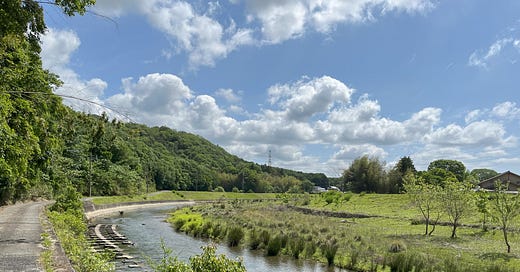



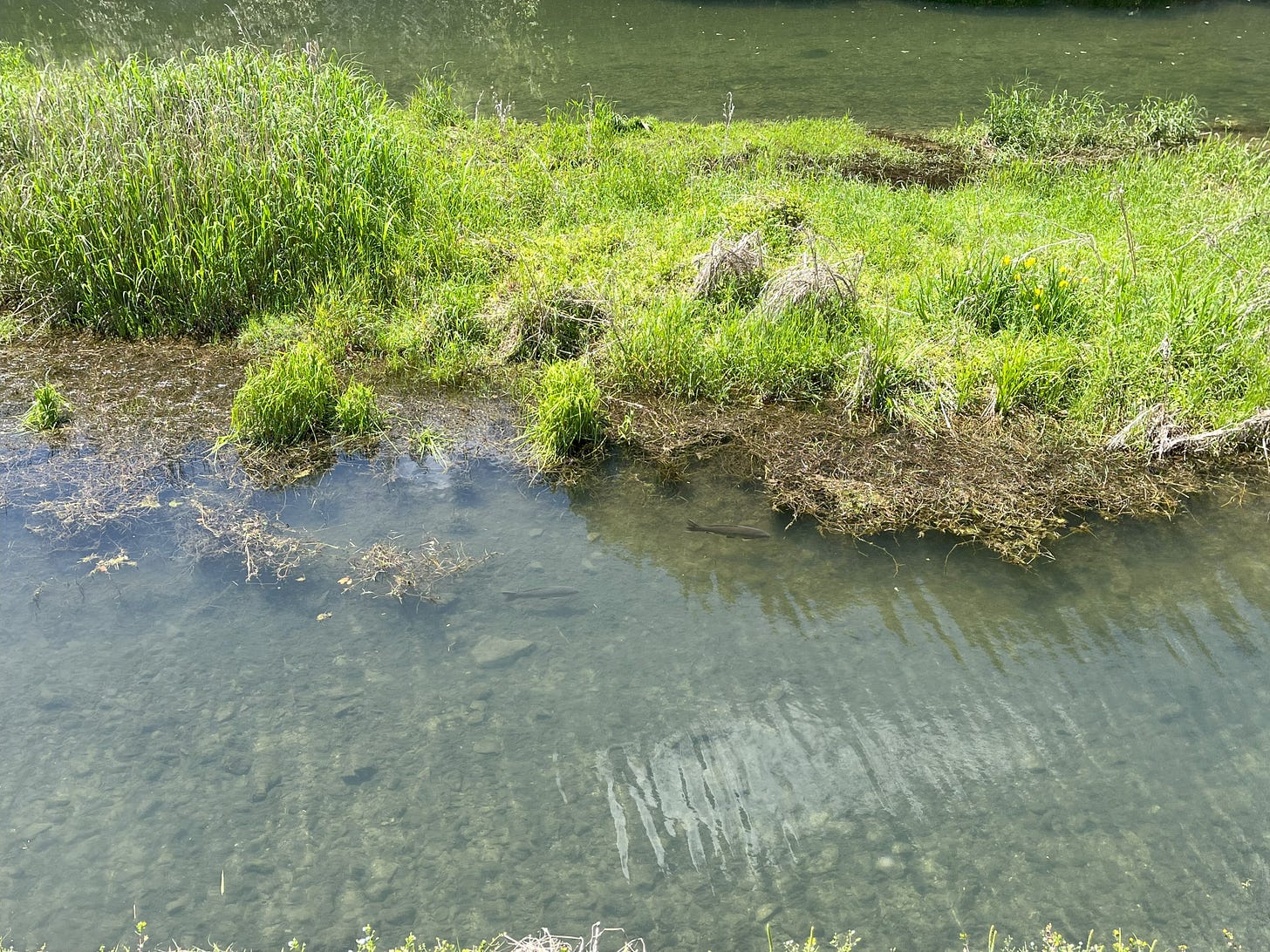
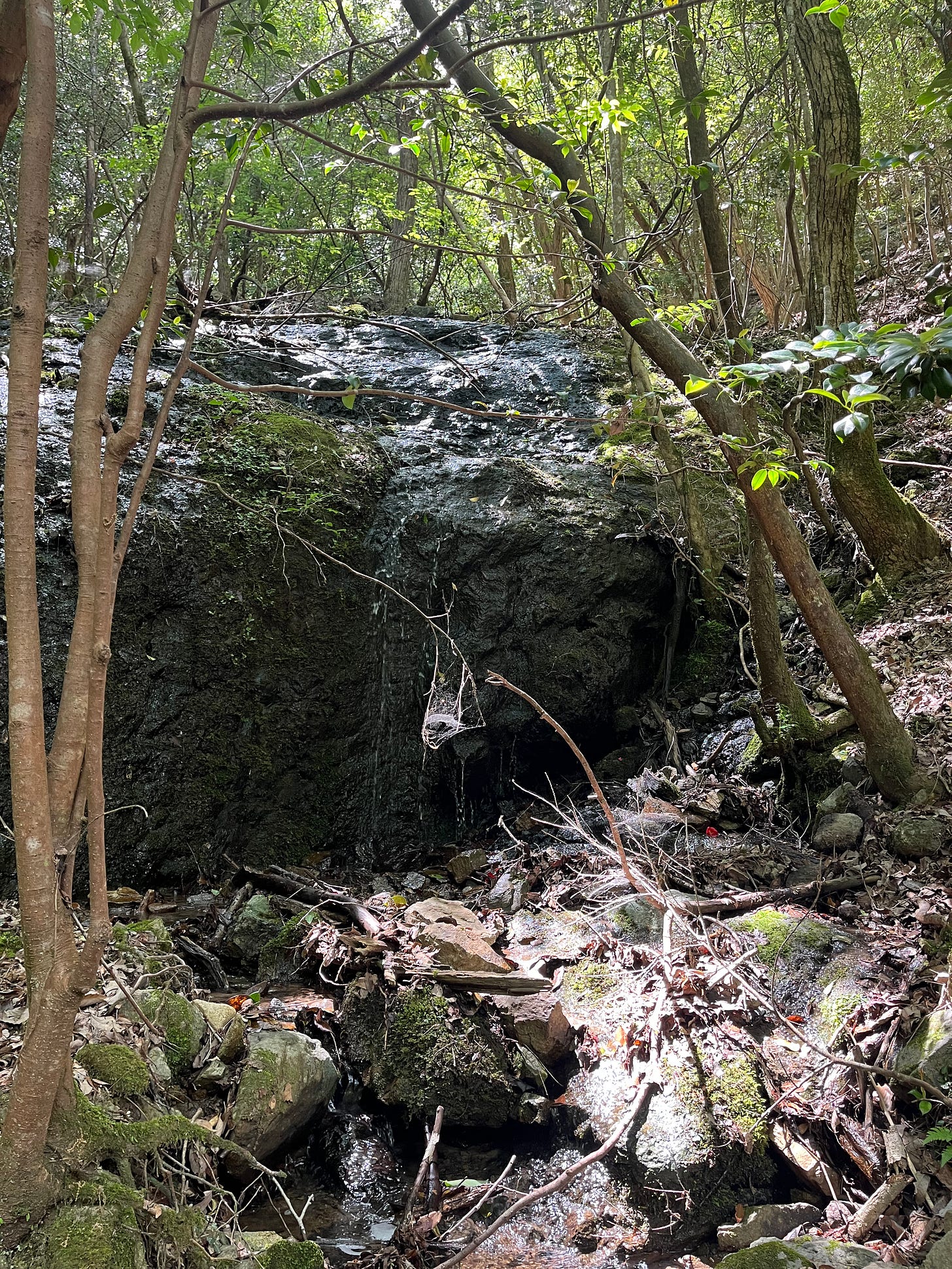
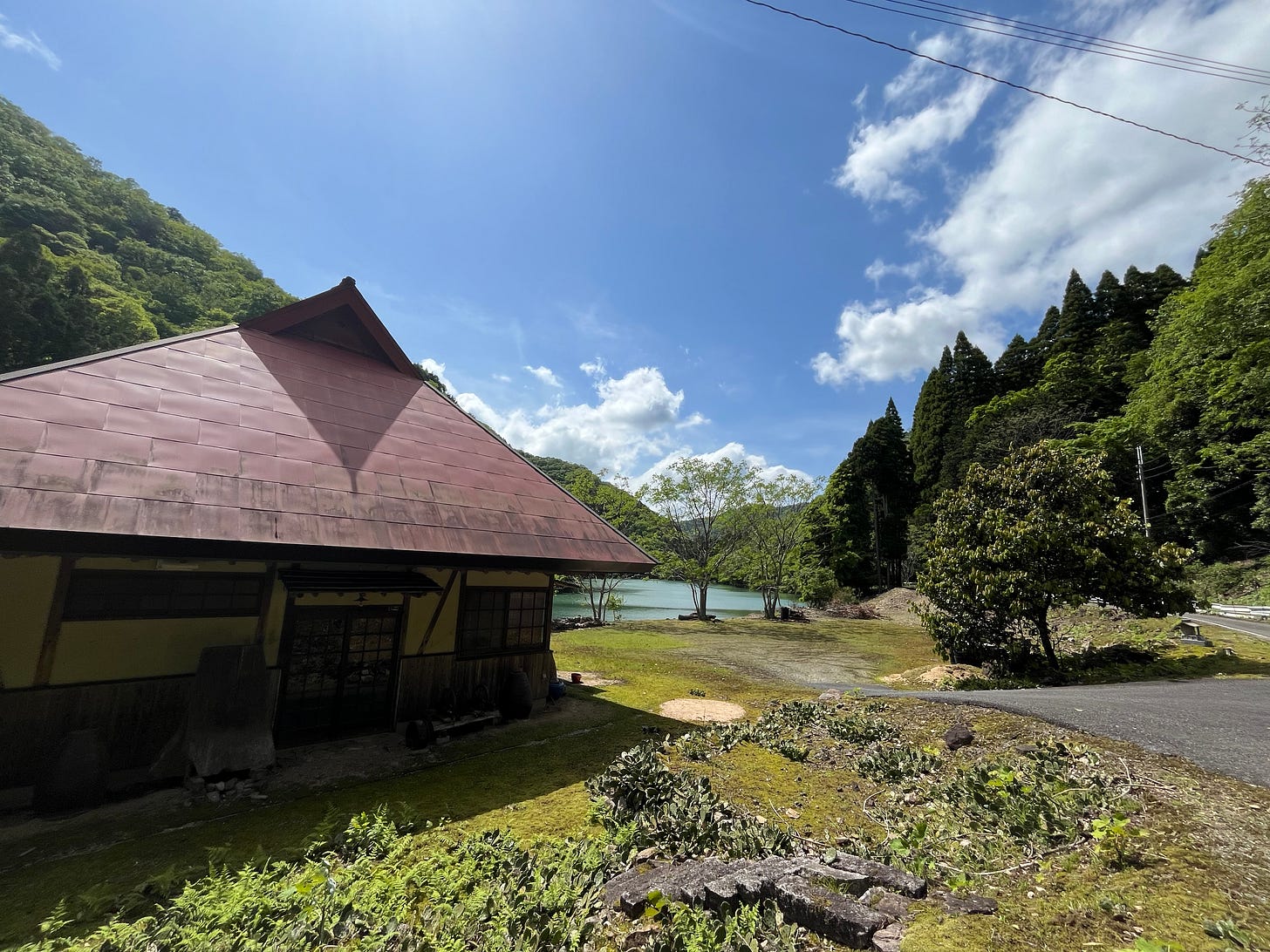
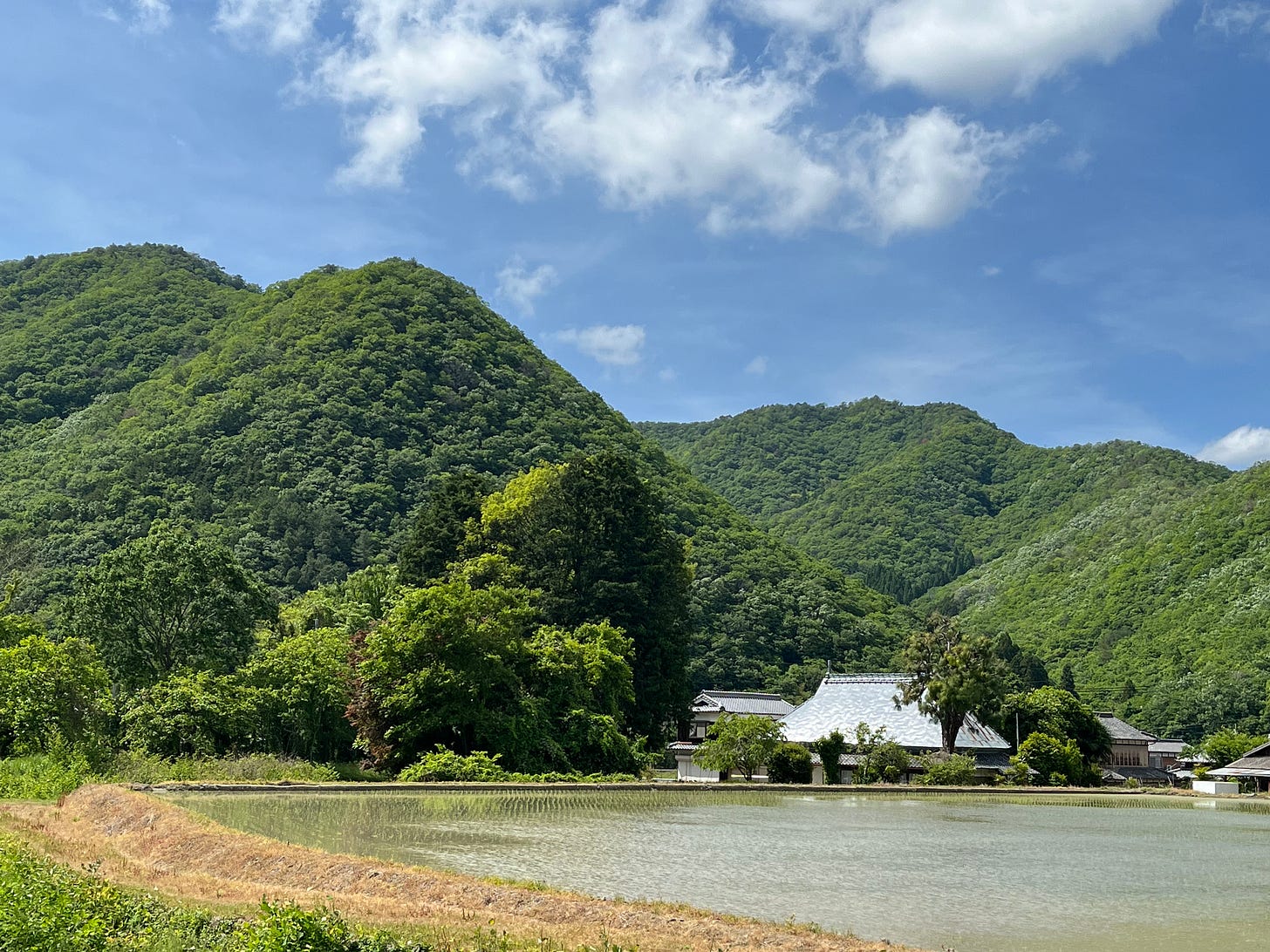
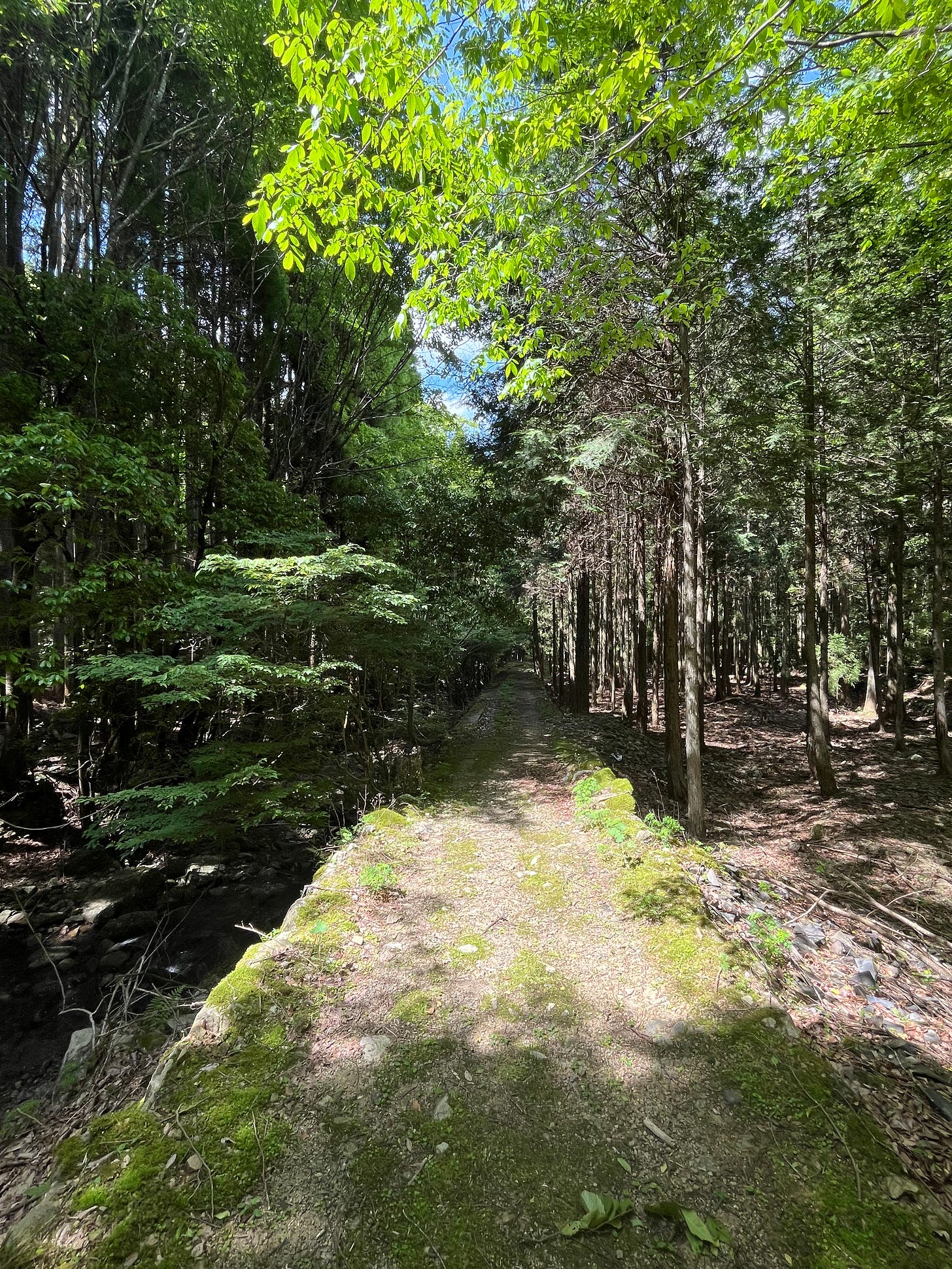


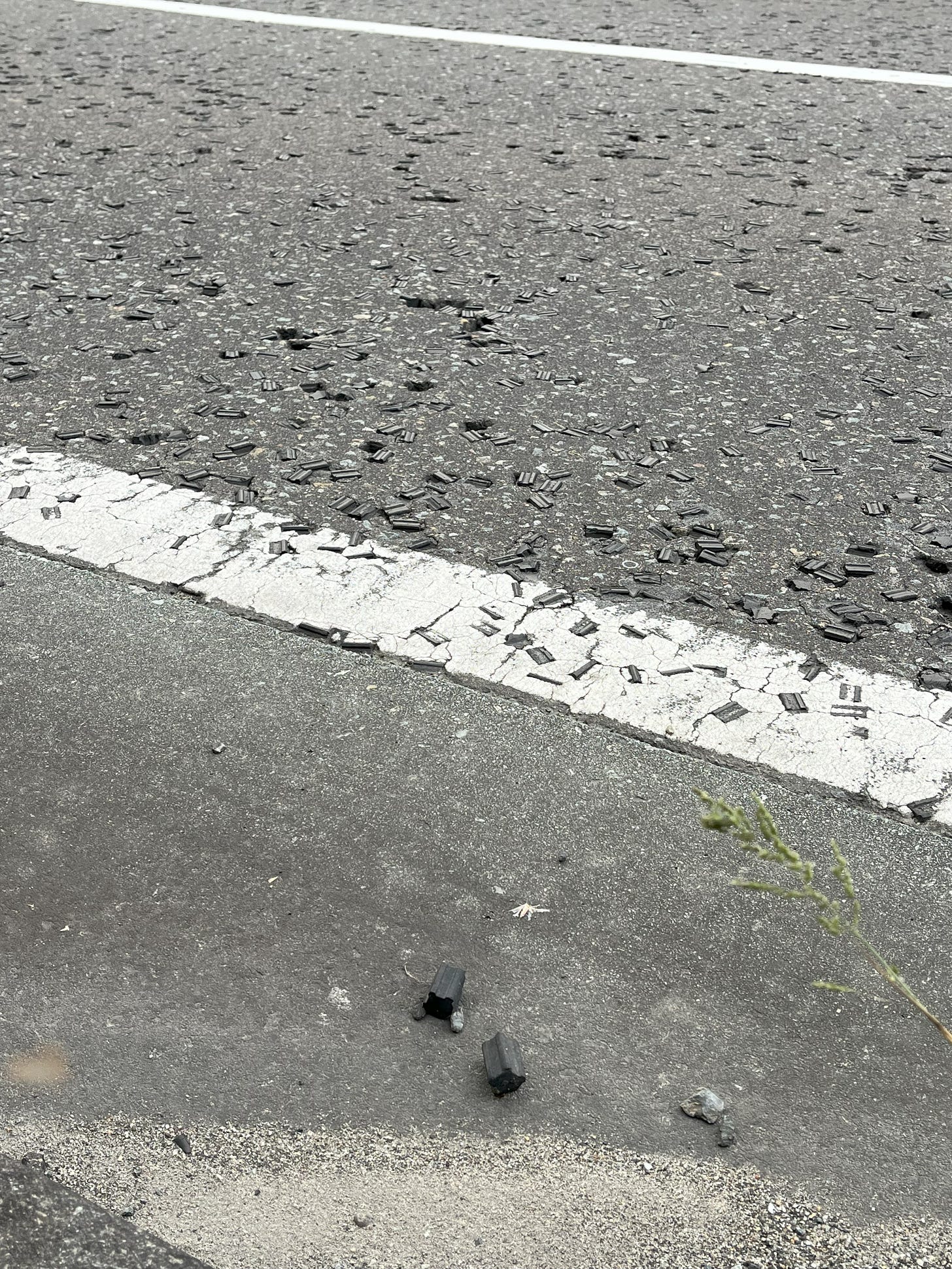
You encountered "aodaisho", the Japanese rat snake, right?
One morning I opened my door and nearly stepped on an aodaisho lounging on the front steps. It hung about and checked me out! They're vermin eaters, so farmers welcome them. I wonder if that's why they're not afraid of people.
Beautiful photos. That's a trail I'd loke to try myself. How long is it?